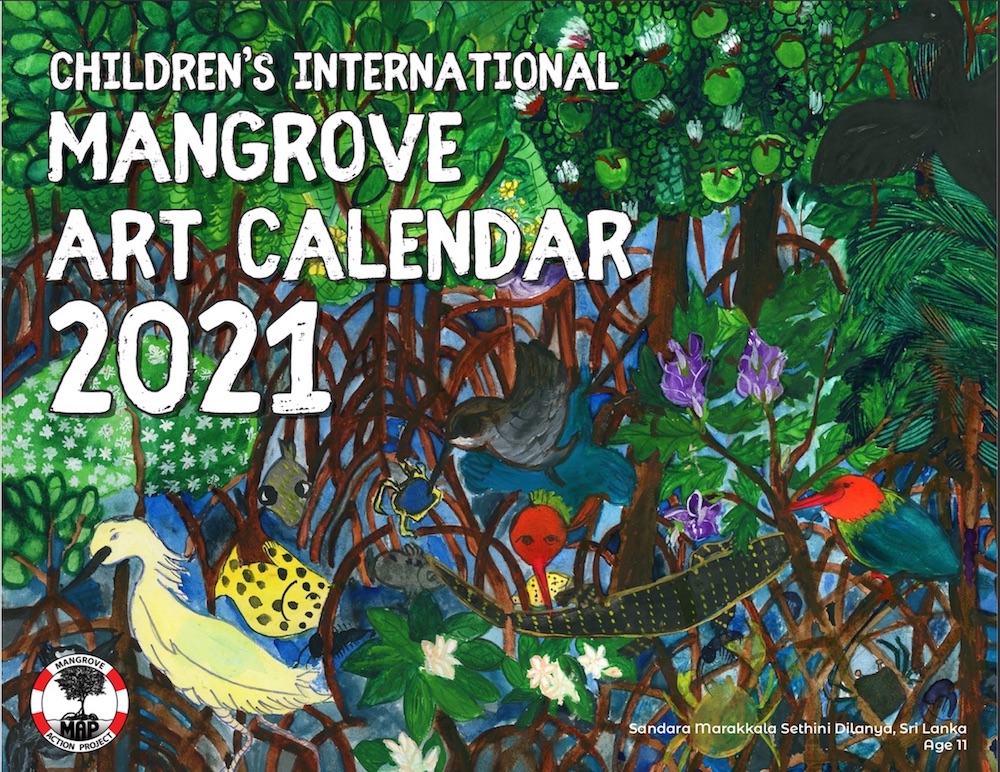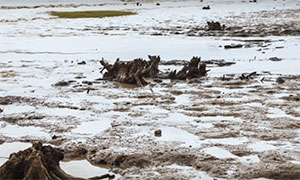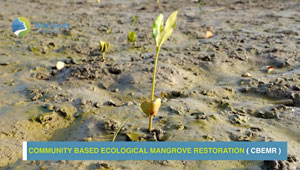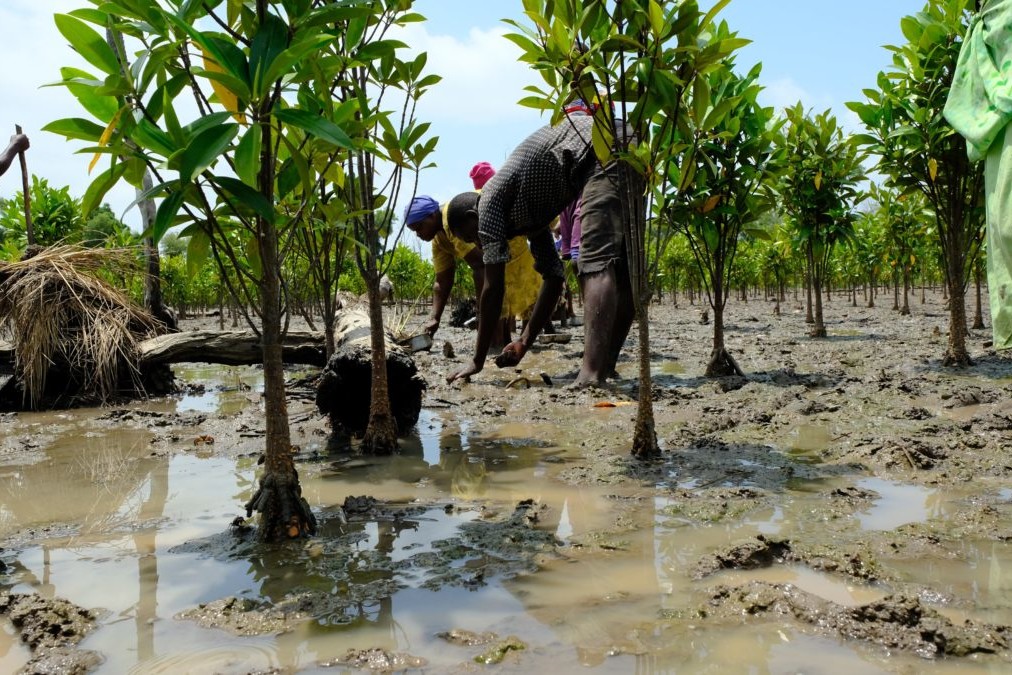|
The MAP News
513th Edition Jan. 30, 2021 |
|
|
Mangrove forests at serious risk of disappearing, loss of species 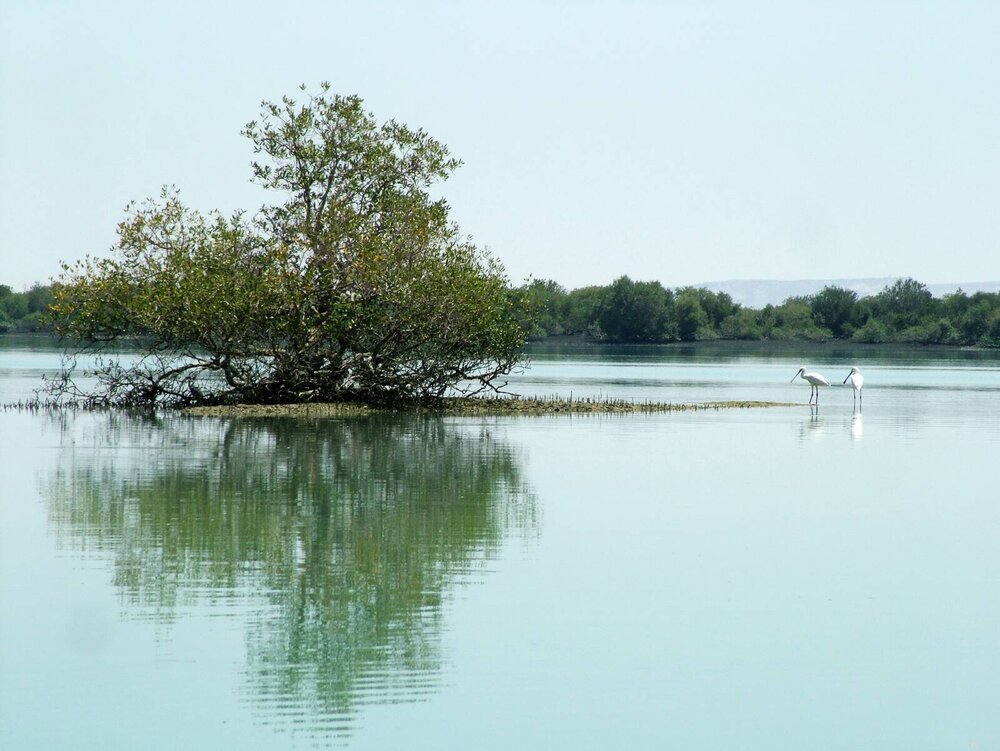 IRAN - Mangroves are ecosystems that are unique in terms of biodiversity and high production rates with ecological and socio-economic value. These forests, with atmospheric carbon stabilization, play an important role in controlling global climate change. In this way, the destruction of mangroves liberates a significant amount of carbon storage, which can worsen global warming and other effects of climate change. Iranian mangrove forests occur in the north part of the Persian Gulf and Oman Sea. The areas of Iranian mangrove forests are almost 10,700 hectares which a maximum area of 67.5 km between Khamir Port and northwest of Qeshm Island, and a minimum area of 0.01 km in Bardestan estuary. Only two species of mangrove include Avicennia marina from Avicenniaceae and Rhizophora macrunata from Rhizophoraceae are found in the Persian Gulf. A. marina species is the dominant species in these forests and Rh. macrunata species just is found in the Sirik region. Overexploitation of mangrove leaves and oil pollution are the main destruction factors in this region. Now, mangrove forests in the Khor Bardestan wetland of Bushehr province are in serious danger due to road construction and shrimp farming site. READ MORE GLOBAL Online Mangrove Restoration Training  Mangrove Action Project (MAP) are now running “Community-based Ecological Mangrove Restoration” (CBEMR) training sessions online during the COVID-19 pandemic. There are numerous benefits to learning this CBEMR approach, including a biodiverse mangrove forest and a holistic solution that includes all relevant stakeholders in the process – from governments and NGOs to local communities. MAP’s Executive Director and lead CBEMR trainer, Dr Dominic Wodehouse, ran a six-week online workshop for various field staff of World Wildlife Fund (WWF) dotted around the globe, with the aim of building their capacity to restore mangrove ecosystems. The responses from the participants have been extremely positive while MAP and WWF are planning quarterly calls to check in and monitor the progress of implementing their new knowledge in the different regions WWF are working to restore mangroves. MAP joined together this time with the US Forest Service (USFS) for their next online workshops for participants from Pacific Island States who are at the forefront of Climate Crises impacts. READ MORE Mangroves threatened by plastic pollution from rivers, new study finds 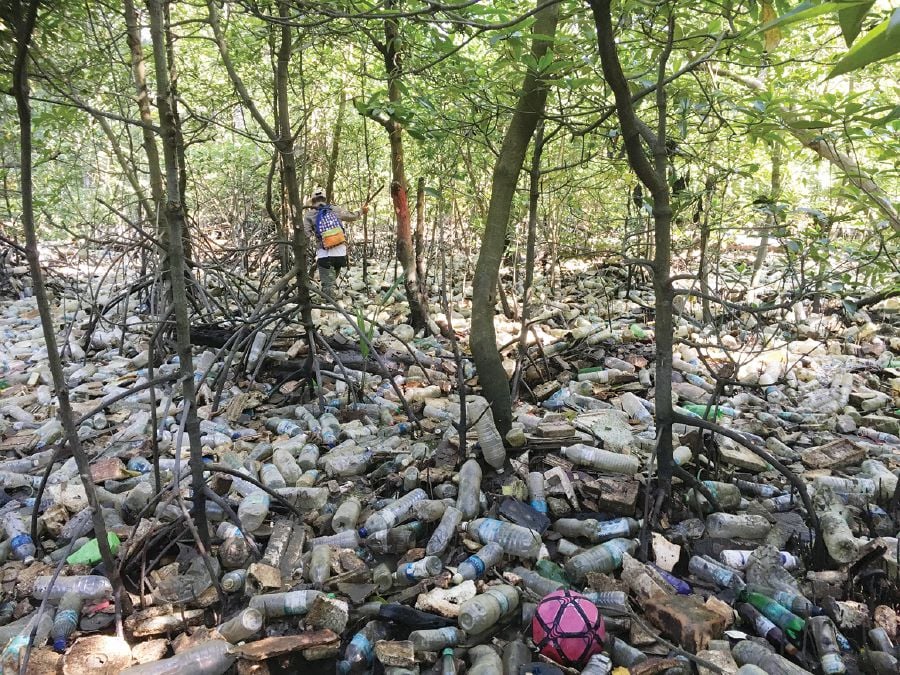 Mangrove ecosystems are at particular risk of being polluted by plastic carried from rivers to the sea. Fifty-four per cent of mangrove habitat is within 20 km of a river that discharges more than a tonne of plastic waste a year into the ocean, according to a new paper published in the journal Science of the Total Environment. Mangroves in southeast Asia are especially threatened by river-borne plastic pollution, the researchers found. The paper, written by scientists at GRID-Arendal and the University of Bergen, is the first global assessment of coastal environments' exposure to river-borne plastic pollution. The majority of plastic waste carried to sea by rivers ends up trapped along coastlines, but some types of coastal environments trap much more plastic than others. The researchers overlayed maps of coastal ecosystems with the most current information on the input of river-borne plastic to sea to find out which coastal environments have the potential to be most affected by plastic pollution originating on land. The study found that river deltas receive 52 per cent of river-borne plastic pollution, though they make up less than 1 per cent of global coastlines. Rocky shores, in contrast, receive only 6 per cent of the plastic pollution, though they make up 73 per cent of global coastlines. No type of coastal environment is unaffected by river-borne plastic pollution. READ MORE AMERICAS Fishermen sing praises of expanding mangrove forest at Ogle 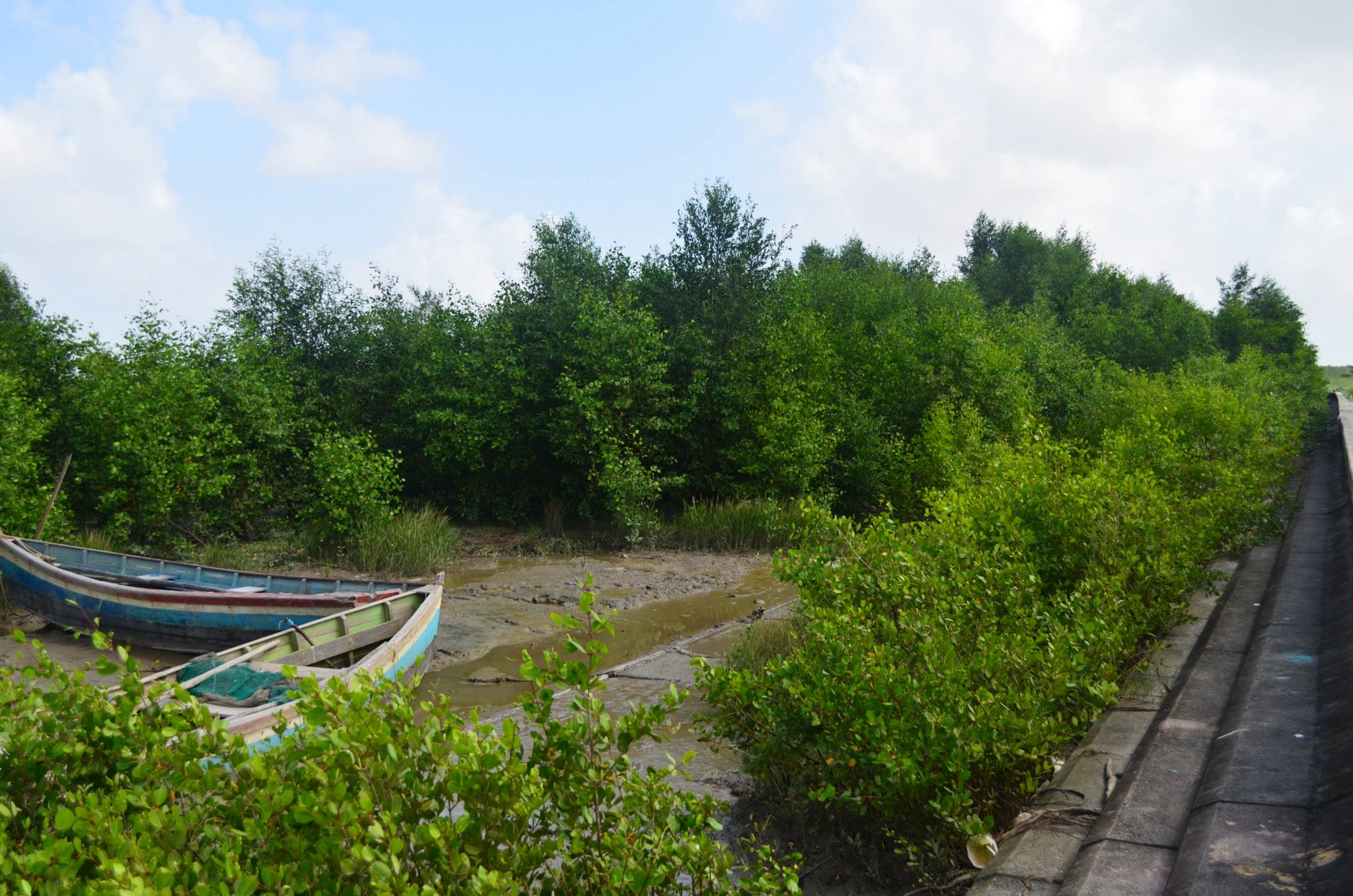 GUYANA - Fishermen who anchor their boats at a channel near Ogle are thankful for the expansive mangroves growing along the East Coast of Demerara saying that it contributes immensely to their lives on a daily basis. While mangroves are better known for their role as natural sea defences, they represent a lot more for fishermen. “They offer us a good night’s sleep,” a fisherman named Norbert (only name given) laughingly said before going on to explain that the mud that comes along with mangroves keep their boats in place and now there are rarely instances of them finding a boat capsized and broken. As a result of this, he said, they usually anchor or tie their boats close to the mangroves. READ MORE Progreso will clean up mangroves and open a third ”Zona Verde”  MEXICO - In order to promote actions in favor of environmental conservation, Mayor Julián Zacarías Curi signed a letter of commitment to become part of the “Preserva Yucatán” initiative, promoted by the real estate company Grupo Libera in coordination with the Mexican Federation of Schools of Biology. According to a press release, the mayor signed the document in a meeting held with Eduardo Triay, president of the board of directors of Grupo Libera; Mario Aguilera, of the civil association of Institutional Relations of the Sustainable Science Center; Jorge Escobar, president of the board of directors; Mabel Aguirre Quinto, deputy director of Ecology of the City Council, and María José Ongay Esquivel, deputy director of Tourism and Commerce. During the meeting among the highlighted commitments of “Preserva Yucatán” for Progreso, the necessary resources were granted to organize and implement a program to clean up protected areas of mangroves and install the third “Green Zone” altogether. READ MORE Global Mangrove Charcoal Market is Set for Lucrative Growth During 2021–2025 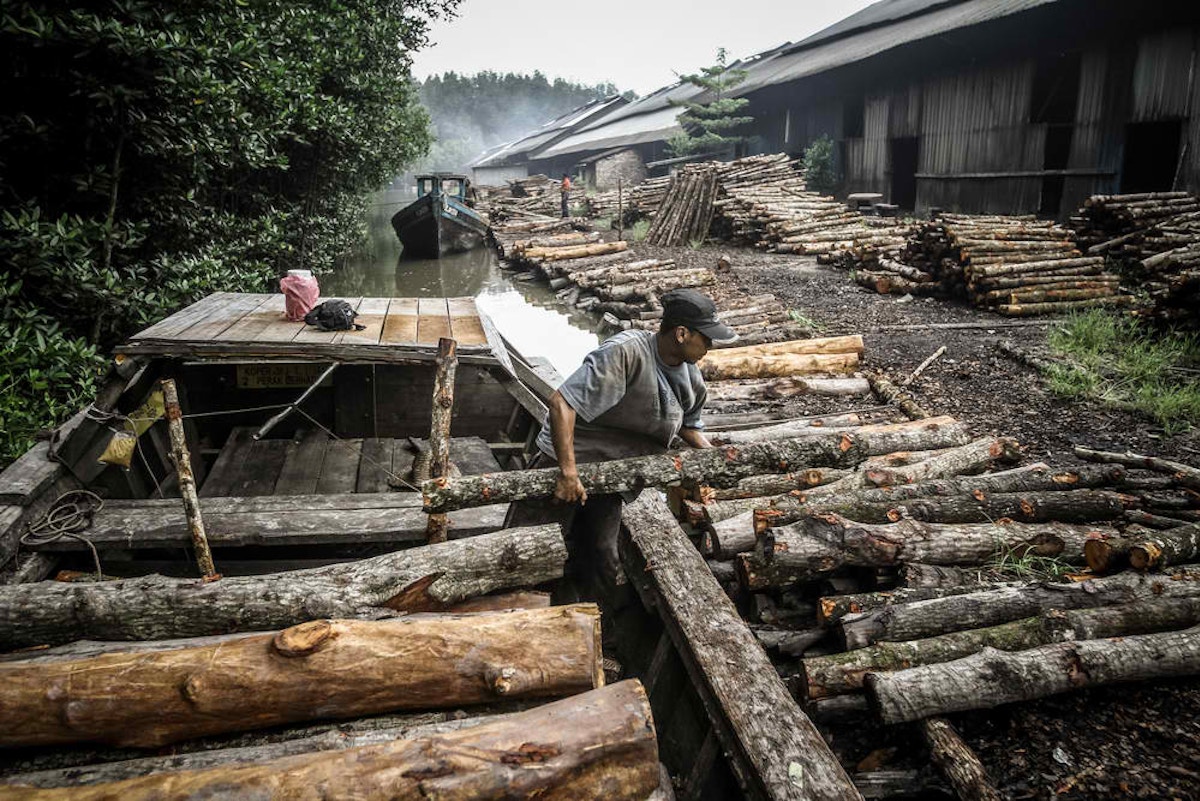 USA - The Mangrove Charcoal Market report makes available the current and forthcoming technical and financial details of the industry. It is one of the most comprehensive and important additions to the Prudent Markets archive of market research studies. It offers detailed research and analysis of key aspects of the global Mangrove Charcoal market. This report explores all the key factors affecting the growth of the global Mangrove Charcoal market, including demand-supply scenario, pricing structure, profit margins, production, and value chain analysis. The report concludes with the profiles of major players in the Mangrove Charcoal market are: Matsuri International, Sagar Charcoal Depot, Viet Delta, Elvatara, Biscaas, Green Gaia Solutions, Hortex Horgerate, CHANH LUAT, Greenlink Biotech, ThangLong Capital. READ MORE ASIA Stingless Bees for Improving Mangrove Biodiversity 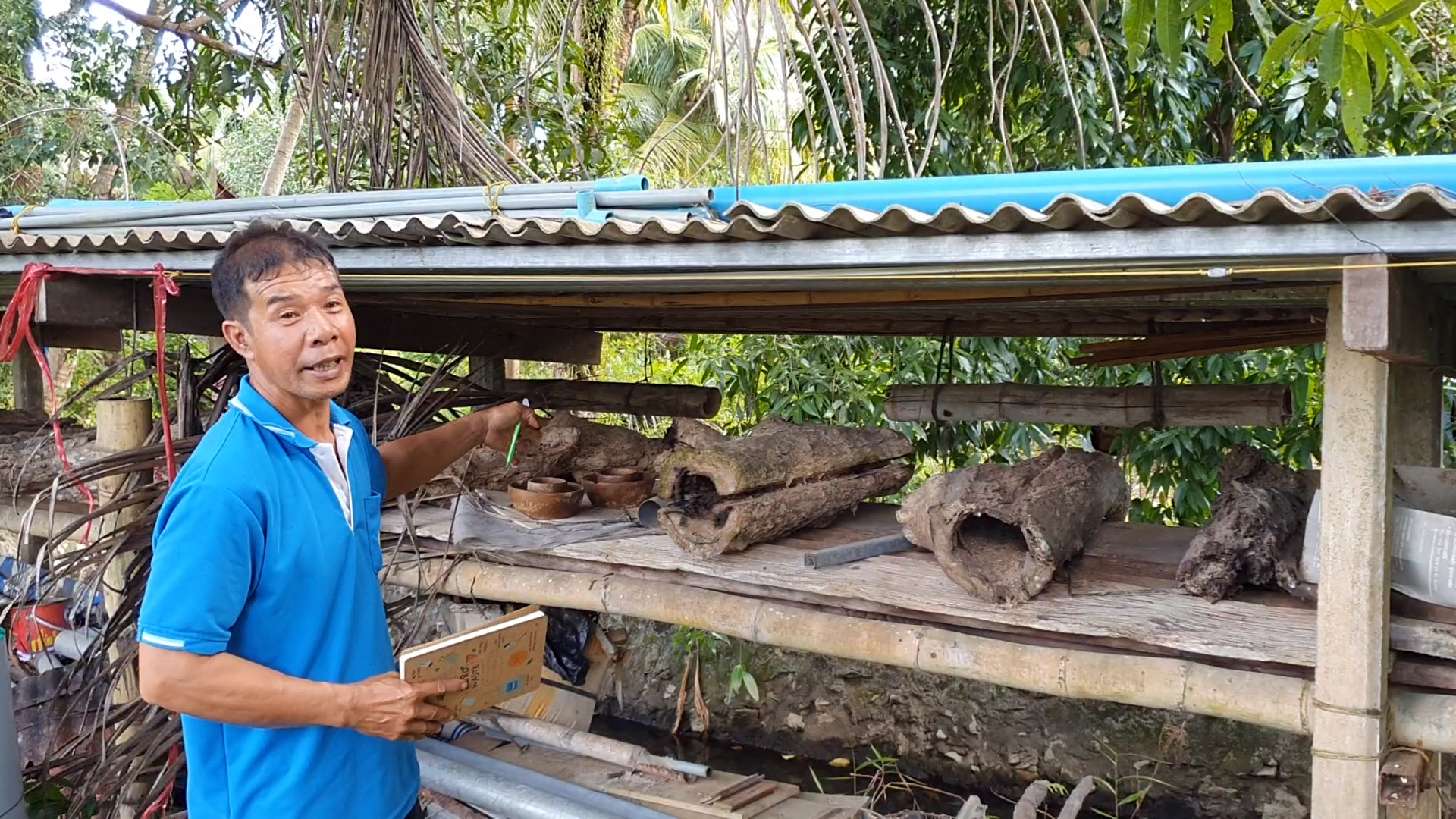 Nai Nang village on the Andaman Coast in southern Thailand have stepped up their mangrove restoration efforts by learning to keep new endemic species of stingless bees. 3 out of the 10 species of stingless bees live within mangrove forests and greatly improves biodiversity through pollination. Mangrove Action Project accompanied Nai Nang to Chanthaburi on a study visit so they could learn about new techniques in stingless beekeeping from experts at the Agricultural Occupation and Development Centre. There were also visits to local beekeeping groups to exchange apiculture and bee box knowledge while the women’s group were taught how to make new honey based related products. The Nai Nang Apiculture Group are excited to start working with the new species of stingless bees and apply their new techniques to improve the health of their bees and produce new products. They will be sharing their newly gained apiculture knowledge as part of their training workshops to other coastal mangrove communities soon. READ MORE Scientists may have found mangrove extract that can cure baldness  THAILAND - hai researchers claim to have found an extract from mangrove trees that can cure baldness. A small study of 50 people suffering with androgenic alopecia — the most common form of baldness — indicates that the extract halts hair loss and also promotes hair growth. The substance, called Avicennia Marin, contains the key chemical Avicequinon-C. This active compound is thought to reverse hair loss by interfering with enzymes which lead to elevated hormone levels that cause baldness. Researchers hope the findings could help people suffering from androgenetic alopecia to reverse their hair loss. READ MORE Beekeeping gives new life to villagers in the Sundarbans  INDIA - Every year, villagers desperate to make a living enter the mangrove forests of the Sundarbans to collect honey or catch fish and crabs. Many are attacked and killed by tigers and crocodiles. However, a project by the West Bengal Forest Department’s Joint Forest Management Committee is trying to bring down the number of human-tiger encounters and strengthen villagers' livelihoods by training them in beekeeping. It is due to the efforts of this project that, since December 2, when the Centre for Science and Environment released a report on adulterated honey, the phone has not stopped ringing at the Kultali Sundarban Banaraksha Bahumukhi Samabay Samity. The Samity, about 100 kilometres from the West Bengal capital Kolkata, markets honey under the Bonphool brand. It was formed by the Joint Forest Management Committee, and it monitors four village-level co-operatives in a bid to create alternative livelihood opportunities. READ MORE Mangrove planting now mandatory in Pakistan 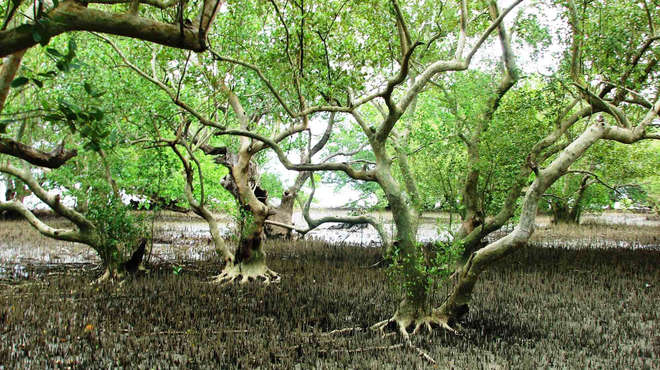 PHILIPPINES - True to its commitment to help promote environmental protection and sustainability, the Philippine Ports Authority (PPA) has ordered the mandatory planting of trees and mangroves for every contract, accreditation and permits issued by the agency. The order takes effect on the February 2 after the 15-day publication period reckoning from January 19. PPA Administrative Order No. 14-2020, signed by PPA General Manager Jay Daniel Santiago, requires the applicants/grantees of contracts, accreditations and permits, among others, to plant 1,000 seedlings of trees or mangroves in coordination with the local office of the Department of Environment and Natural Resources (DENR) within their respective business locations. The PPA GM said this will be the new norm in the agency in granting contracts in compliance with Republic Act 9729 otherwise known as the ‘Climate Change Act of 2009”. READ MORE Mangroves buzzing with insect life and are home to 1,102 species, study shows 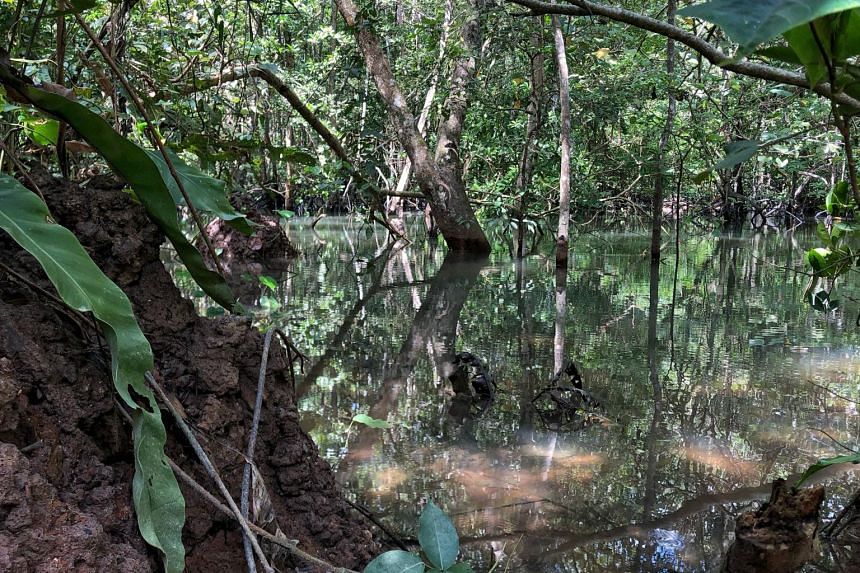 SINGAPORE - Mangroves here may boast fewer plant species than other types of forests, but they still buzz with life, new research has indicated. More than 3,000 species of insects have been found in mangrove patches here, with most likely to be new to science or new records for Singapore, said Dr Darren Yeo, a post-doctoral research fellow at the National University of Singapore (NUS).Mangroves here may boast fewer plant species than other types of forests, but they still buzz with life, new research has indicated. "The insect communities in mangroves are very distinct and are likely uniquely adapted to living in this type of environment," Yeo said. As mangroves have long been considered species-poor for insects due to low plant diversity, the latest findings were significant. READ MORE 'Shield the Mangrove’: The effects of mangrove deforestation in Sindh’s coastal regions 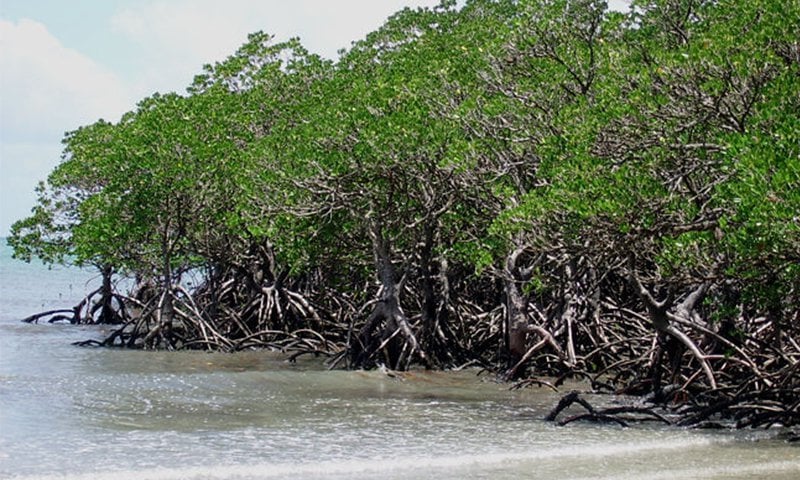 PAKISTAN - The Mangrove swamps of Sindh’s coastal zone are extensive, covering ~600,000 hectares, 95% of the total mangrove population of the country. Today, as per estimates, mangroves are on continuous decline as deforestation takes place at an alarming rate and reforestation does not, at the same level. Approximately less than 6% of Pakistan’s land is covered by forest and less than 3% of that is mangroves. This means that less than 0.002% of Pakistan’s land is covered by mangroves. Pakistan’s climate is ideal for mangroves, as they thrive in warm climates, however Pakistan does not enjoy the same benefits a mangrove dense country such as Brazil or Indonesia do. The forests have remained ignored and their potential has been largely neglected in Pakistan. Due to urbanization and industrialization, the growth of Mangrove shrubs has also been affected. What’s worse is that people living along coastal areas are not aware of the benefits of mangroves to their own livelihood, especially the fishermen, and the fish market as a whole. READ MORE Metro Pacific group opens mangrove center in Cebu town 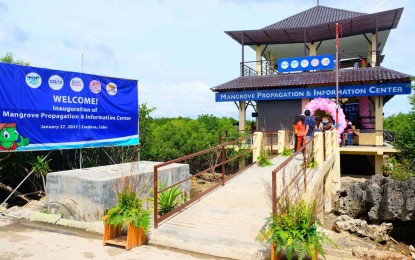 PHILIPPINES - The Metro Pacific group and the local government of Cordova have inaugurated the Mangrove Propagation and Information Center in Barangay Day-as of this coastal town. This is the first mangrove center of its kind in the Visayas region and the third in the whole country, which is seen to help further boost the town's booming ecotourism flourish. Cordova is a third-class municipality that borders Lapu-Lapu City in the south of Mactan Island. Metro Pacific Investments Foundation (MPIF), the corporate social responsibility arm of Metro Pacific Investments Corp. (MPIC), the Cebu-Cordova Link Expressway Corp. (CCLEC) and the local government here led the opening of the facility recently. The two-story facility will serve as the center for the protection and propagation of mangrove trees in the coastal areas, including the rehabilitation of degraded mangroves in the whole town of Cordova. READ MORE Maharashtra government notifies 1,977-ha mangroves in Thane, Raigad as forest 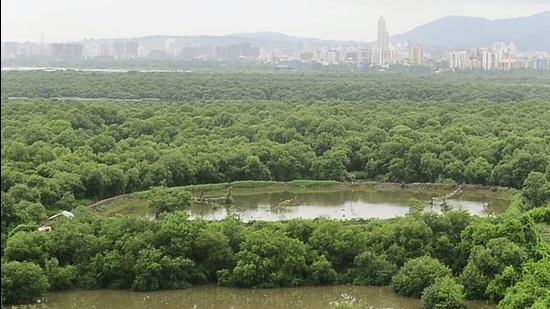 INDIA - The Maharashtra government has notified more than 1,977 hectare (ha) of mangrove area in Thane and Raigad districts as reserved forest, to be handed over the forest department for conservation under the section 20 of the Indian Forest Act (IFA), 1927. In a gazette notification issued on January 20, the state revenue and forest department announced that 1,458ha of mangrove area across 14 villages in Thane district, including Vashi, Nerul and Ghansoli is to be handed over to the forest department. Additionally, almost 519ha have been notified in Pen and Roha talukas of Raigad district, according to the gazette notification reviewed by HT. “These are lands that were already with the mangrove cell. They were already notified as reserved forest under section 4 of the IFA. Due process was followed to check for any claims on the land by the district administration. This is the final notification that there are no claims on these lands and they are reserved forests, soon to be handed over to the forest department,” said Virendra Tiwari, additional principal chief conservator of forests (mangrove cell) and an ex-officio executive director of the state mangrove foundation. READ MORE |
URGENT ACTION
|
|
Mangrove Action Project Click here to view past newsletters
|
|
Search News Archive
Saturday, January 30, 2021
MAP News Issue #513 - Jan 30, 2021
Saturday, January 16, 2021
MAP News Issue #512 - Jan 15, 2021
|
The MAP News
512th Edition Jan. 16, 2021 |
|
|
2020 Hurricanes Damage Vulnerable Mangroves 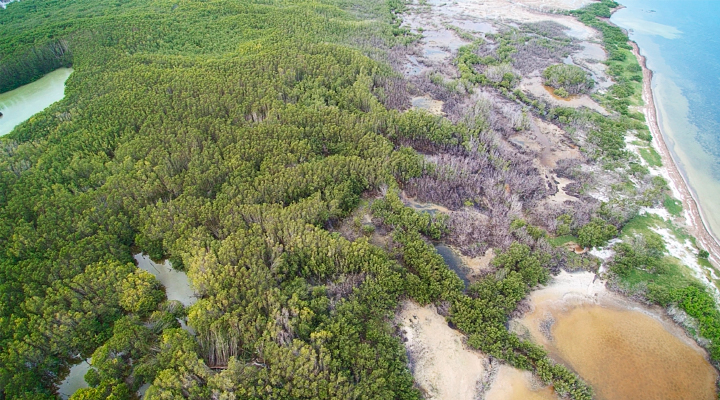 GLOBAL - Central America experienced one of its most intense hurricane seasons in 2020. Two major hurricanes and a handful of other late-blooming storms took many lives, displaced hundreds of thousands of people, and caused billions of dollars in economic losses. The storms also left severe scars on the landscape, particularly in some mangrove ecosystems. “Extreme events in the Caribbean are not new, but we are seeing more of them in recent years,” said Rosa Roman-Cuesta, a tropical forest ecologist at Wageningen University (The Netherlands). “We are trying to understand how coastal systems are responding to these events. That’s why studying the effect of the 2020 mega-hurricane season is important.” Roman-Cuesta said the type of hurricane damage has evolved over the years. In years past, she explained, hurricane winds typically caused most of the mangrove damage by uprooting trees, defoliating entire areas, and blocking drainage to the ocean. But in recent years, storms have been rapidly intensifying and stalling more often. The result is extreme precipitation and flooding that affects oxygen concentrations in soils and hinders photosynthesis for mangroves. Large storm surges also physically damage the trees. READ MORE GLOBAL World Wetalnds Day is Feb 2, 2021  “Wetlands and water”, the theme for WWD 2021, shines a spotlight on wetlands as a source of freshwater and encourages actions to restore them and stop their loss. We are facing a growing freshwater crisis that threatens people and our planet. We use more freshwater than nature can replenish, and we are destroying the ecosystem that water and all life depend on most – Wetlands. The 2021 campaign highlights the contribution of wetlands to the quantity and quality of freshwater on our planet. Water and wetlands are connected in an inseparable co-existence that is vital to life, our wellbeing and the health of our planet. READ MORE New science: restoring forests, coastal protection and more 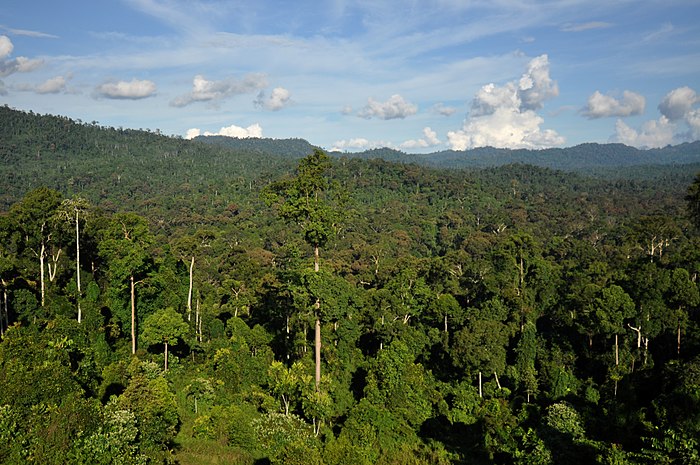 GLOBAL - With extinction rates accelerating around the world, a recent study identified areas where forest restoration could have the most profound impacts on protecting threatened species. Buffeted by human activities that destroy habitats and degrade ecosystems, more than 35,000 species are classified by as “threatened” by the International Union for the Conservation of Nature. Roughly 80 percent of threatened amphibian, bird and mammal species live in forests around the world. “The world’s wildlife is in crisis, biodiversity is declining at an unprecedented rate,” said Conservation International scientist Neil Cox, a co-author on the study. “As the COVID-19 pandemic has shown, our relationship with nature has significant consequences for our ecosystems, economies and well-being. Pinpointing where forest restoration provides the greatest conservation gains for threatened species can help guide our efforts over the next decade.” The study’s authors found that tropical forests — particularly in the Northern Andes Mountains, Central America, the Philippines, Brazil, the Caribbean Islands and eastern central Australia — are priorities for restoring wildlife habitat. READ MORE AMERICAS Coastal Watch launches new mangrove initiative  USA - Coastal Watch reported that mangroves are a vital source of energy, provide nursery habitats for juvenile fish, nesting habitat for wading birds, stabilize shorelines by reducing erosion and are a buffer against storm damage. Many people are familiar with these iconic trees, but few may understand how tightly linked they are to the marine ecosystem in Southwest Florida. This year, Coastal Watch is embarking on a new initiative to teach the value of mangroves on the islands through community involvement. Through the educational initiative, “Back to Our Roots,” it is inviting residents to “adopt” their own mangrove to nurture so it can be planted at a mangrove restoration site on Sanibel or Captiva. READ MORE ASIA Indonesia renews peat restoration bid to include mangroves, but hurdles abound 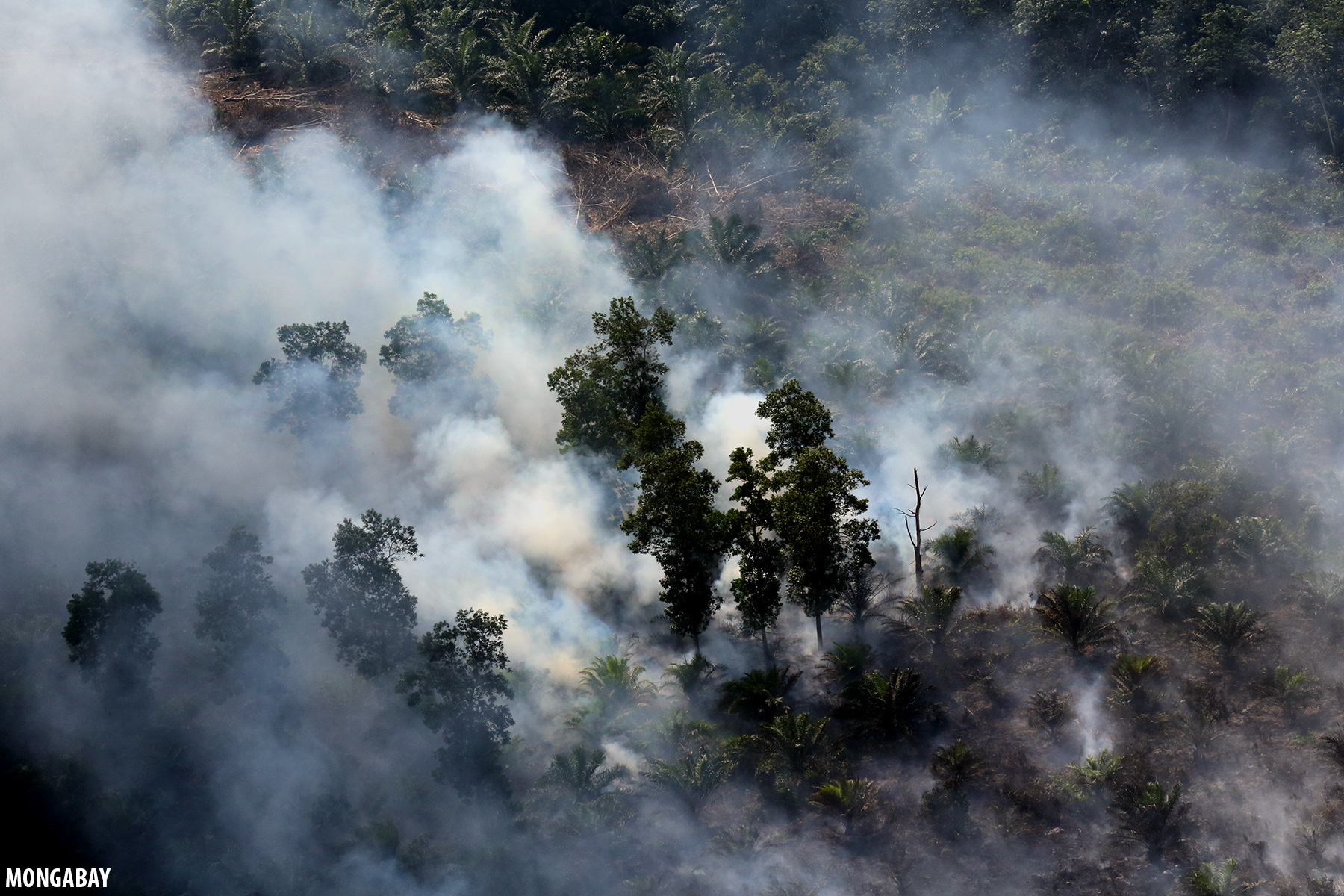 INDONESIA - An Indonesian government initiative that fell short of its goal to rehabilitate degraded peat forests will get another chance to do so — plus the added task of rehabilitating mangrove habitats. Indonesian President Joko Widodo extended the mandate of the Peatland Restoration Agency (BRG) through to 2024, after it expired at the end of 2020. He had established the agency in 2016 in the wake of widespread peatland fires the previous year, and tasked it with restoring more than 2.6 million hectares (6.4 million acres) of degraded peatlands — an area nearly three times the size of Puerto Rico — to prevent future fires. The 2.6 million hectares target consists of 900,000 hectares (2.2 million acres) of peat outside concessions and 1.7 million hectares (4.2 million acres) inside concessions. By the end of 2020, however, the BRG had managed to restore 835,288 hectares (2.06 million acres) of peatland outside concession areas, or 94% of its target. READ MORE Tigers stalk as storms, poverty force Indians deep into mangrove forests  INDIA - On a warm November afternoon, Parul Haldar balanced precariously on the bow of a small wooden dinghy, pulling in a long net flecked with fish from the swirling brown river.Just behind her loomed the dense forest of the Sundarbans, where some 10,000 square km of tidal mangroves straddle India’s northeastern coastline and western Bangladesh and open into the Bay of Bengal. Four years ago, her husband disappeared on a fishing trip deep inside the forest. Two fishermen with him saw his body being dragged into the undergrowth - one of a rising number of humans killed by tigers as they venture into the wild. That Haldar, a single mother of four, is taking such risks is testament to growing economic and ecological pressures on more than 14 million people living on the Indian and Bangladeshi sides of the low-lying Sundarbans. They have led to a reduced dependence on agriculture, a rising number of migrant workers and, for those like Haldar who can’t leave the delta to work elsewhere, a reliance on the forests and rivers to survive. READ MORE Climate change caused mangrove collapse in Oman 6,000 years ago 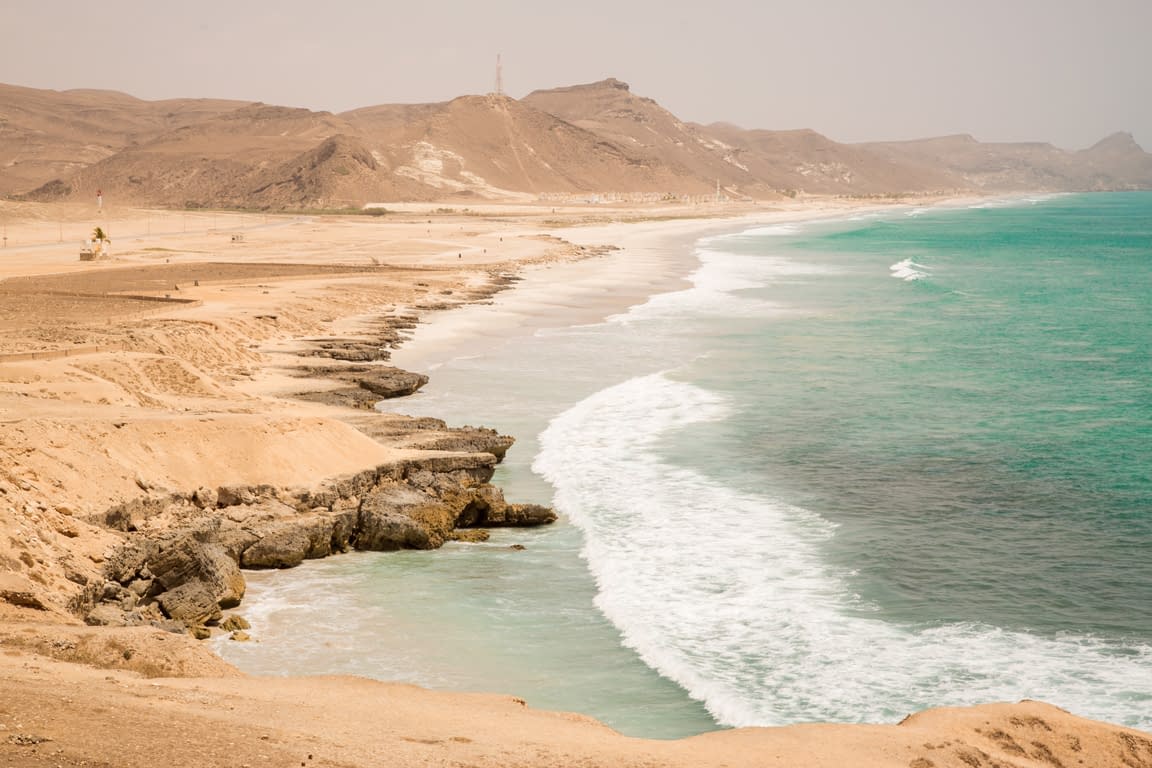 OMAN - Most of the mangrove forests on the coasts of Oman disappeared about 6,000 years ago. Until now, the reason for this was not entirely clear. A current study of the University of Bonn (Germany) now sheds light on this: It indicates that the collapse of coastal ecosystems was caused by climatic changes. In contrast, falling sea level or overuse by humans are not likely to be the reasons. The speed of the mangrove extinction was dramatic: Many of the stocks were irreversibly lost within a few decades. The results are published in the journal Quaternary Research. Fossil finds prove that there used to be many mangrove lagoons on the coast of Oman. However, some 6,000 years ago these suddenly largely vanished - the reasons for this were previously disputed. Over the past few years, Decker traveled several times to the easternmost country of the Arabian Peninsula to pursue this question for her doctoral thesis. With the support of her doctoral supervisor Prof. Gösta Hoffmann, she compiled numerous geochemical, sedimentological and archaeological findings into an overall picture. "From our point of view, everything suggests that the collapse of these ecosystems has climatic reasons," she says. READ MORE New mangrove forest mapping tool puts conservation in reach of coastal communities 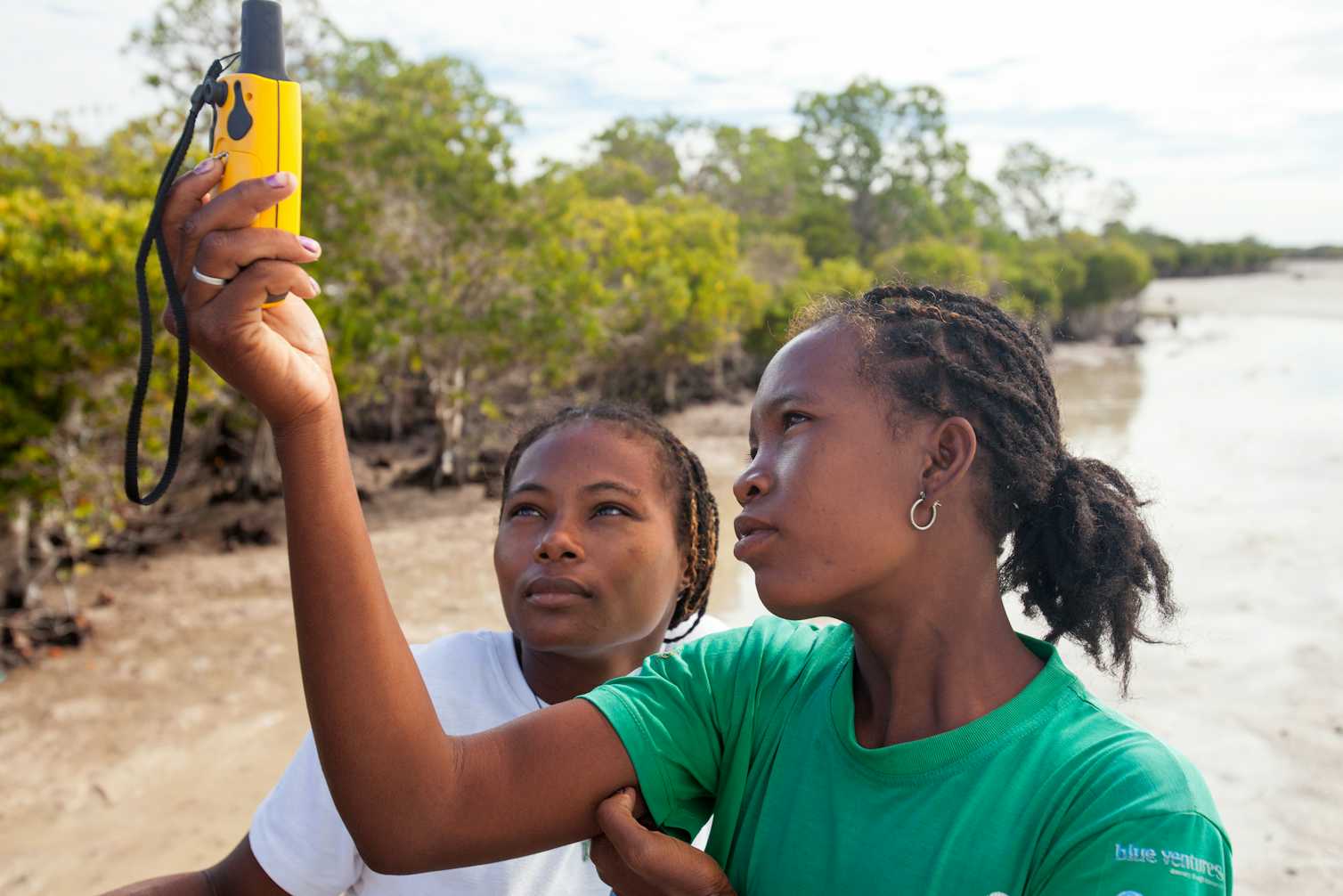 MYANMAR - Despite their obvious value, aquaculture, agriculture, urban development and unmanaged harvest are converting mangrove ecosystems across much of the tropics. Approximately 35 per cent of global mangrove cover was lost in the 1980s and ‘90s. While the rate of loss slowed in the past two decades — to an estimated four per cent between 1996 and 2016 — many regions remain hotspots for mangrove loss, including Myanmar. My colleagues and I use satellite imagery and field measurements to study mangrove ecosystems in several countries. We’ve developed an accessible and intuitive tool that provides coastal managers with the accurate, reliable, up-to-date and locally relevant information they need for effective community-based conservation of these critical blue (marine) forests. Until now, information from satellite imagery on mangrove extent and change was either global in coverage and not intended for the smaller areas typically covered by community-based conservation efforts, or — if focused on a local scale — required substantial and costly technical expertise. READ MORE Alarm raised over systematic destruction of mangroves in Maharashtra  INDIA - Activists allege that they have made several complaints to all the concerned authorities, who sadly appear to be unconcerned. Environmentalists have raised concerns over the massive destruction of mangroves at Ulwe and Kharghar in Raigad district and Vashi in Thane district of Maharashtra. They have appealed to the Bombay high court appointed mangrove protection and conservation committee to intervene before the sea forests vanish. The development comes before the mangroves’ land gets transferred to the forest department. Navi Mumbai based environment protection organisation NatConnect Foundation alleged that the attempt to destroy the mangroves’ land appears to be systemic. “This appears to be a methodical, systematic conspiracy by the land grabbers to destroy the mangroves, dry up the area before the forest department steps in,” said B N Kumar, director of NatConnect Foundation. READ MORE More mangroves planted at Iloilo River  PHILIPPINES - EMPLOYEES and agency personnel of SM City Iloilo planted the first batch of mangroves at riverbank near Esplanade 9 on January 13. Several batches of staff will be deployed on specific days to complete the target of 2,000 mangroves at the site. Mayor Jerry Treñas thanked partners for helping implement initiatives for environmental preservation. The activity was part of the massive mangrove planting activities of City Government, set to spruce up banks of Iloilo River particularly along new sections of Esplanades. The mall, headed by SM Regional Operations Manager for Visayas 3 Girlie Liboon, responded to the call of collective efforts in conserving the waterway at the heart of the city. READ MORE OCEANA Rising sea levels transform coastal region around Kakadu National Park 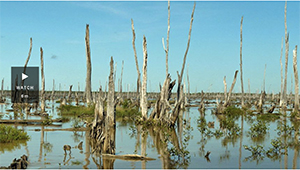 AUSTRALIA - Floodplains around Australia's largest national park are undergoing a visible transformation as rising sea levels push saltwater further from the coast into its freshwater river systems. Climate change is understood to be driving the phenomenon along the coastal region around Kakadu National Park in the Northern Territory, which will likely have dramatic consequences in the coming century. If emissions continue to rise, modelling by the CSIRO from 2017 shows almost half of Kakadu's freshwater wetlands could be inundated with saltwater within 50 years, spelling out drastic repercussions for biodiversity. Due to a process that began decades ago, evidence of saltwater inundation is plain to see in areas of the park and beyond, where mangroves — shrubs that thrives in brackish water — have taken over as far as the eye can see. READ MORE Call for urgent action to prevent further dieback of Adelaide's St Kilda mangroves  AUSTRALIA - About 10 hectares of mangrove forest adjacent to the St Kilda Mangrove Trail died within two months last year, along with 35 hectares of salt marsh, and the gardens of about half a dozen houses. Nearby brine ponds, mined for salt by company Buckland Dry Creek, are believed to be leaking hypersaline water into the mangrove ecosystem — threatening not only their existence, but that of several fish and migratory bird species. Environmental consultant Peri Coleman is calling for excess brine in the ponds to be pumped out immediately before it solidified and could not be moved. Ms Coleman said she believed the dieback was caused by the refilling of gypsum ponds with hypersaline brine at the nearby Dry Creek salt field, about 20 kilometres north of Adelaide's CBD. She said the ponds had been empty since 2014, causing their gypsum lining to dry out and crack. "Once the brine was filled back up into those ponds, it immediately started to seep out and took the acid and the hypersaline brine with it into the mangroves and salt marsh area," she said. READ MORE FEATURED SITE This decade, we can rewrite the future.  VIEW SITE |
2021
|
|
Mangrove Action Project Click here to view past newsletters
|
|
-
The community of adults and youth in Cayman Islands has come together recently to release a series of educational videos. Each is geared to...
-
By Alfredo Quarto, Program & Policy Director Co-founder, MAP There is a rather urgent situation concerning the bio-invasion of the Son...
-
By: Isabel Robinson, MAP Volunteer Intern Some months ago I decided to come to Thailand and do an internship in mangrove conservation, ...
MAP News Issue #596 = April 20, 2024
ENTRIES NOW OPEN! Mangrove Photography Awards 2024 10 Years Celebrating Mangroves GLOBAL - MAP has launched our 10th Mangrove Photograp...



